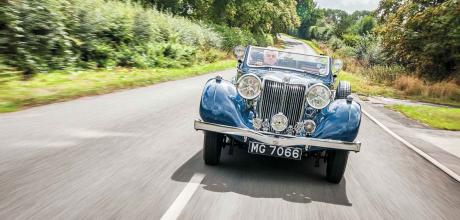1939 MG WA 2.6 Litre Drophead recreation
The ultimate pre-war MG wasn’t a sports car but an ultra-rare, long lost drophead coupe designed to entice Bentley customers. Peter Tomalin drives a stunning recreation.
Photography Nigel Harniman
MG WA DROPHEAD
Long lost 1930s Swiss luxury MG re-created
Sweet Swiss Style
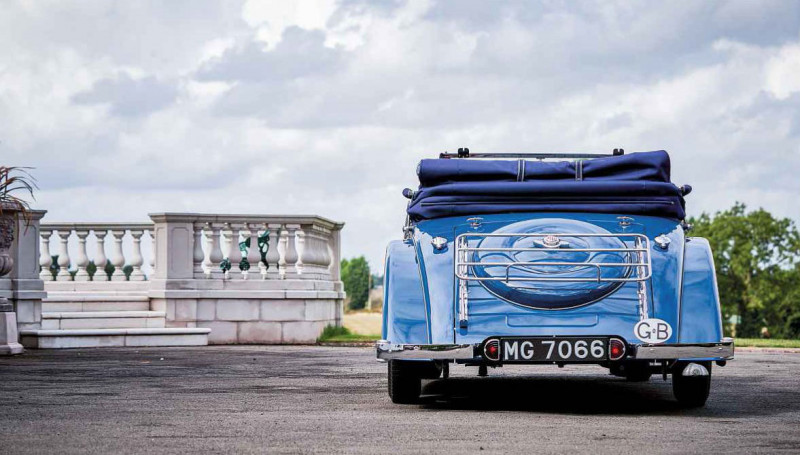
A car for those who can choose from the worlds best, irrespective of price consideration.' Quite a mission statement from the marketing johnnies at the MG Car Company. And there was more. A well-tested machine, capable of a performance as fast as anything on the road, much safer than most, outstanding in appearance, supremely reliable and unequalled in value.’ The brochure for the new 2.6 Litre model certainly wasn’t stinting on the superlatives. But then this wasn’t your regular MG.
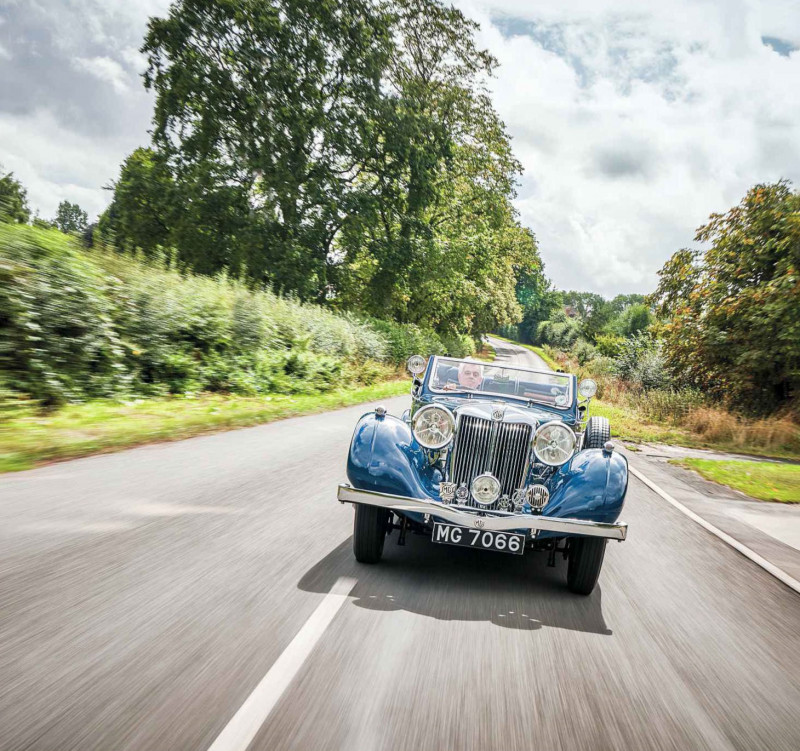
Think pre-war MG and for most of us a diminutive sports car comes to mind, most likely an early Midget: long of bonnet, narrow of body, two bucket seats, rorty four- cylinder engine, slab fuel tank and spare wheel strapped on the back; uncomplicated, unsophisticated and unadulterated fun. Such cars were, of course, hugely successful in their day. But sales tailed off during the Depression, and, following MG’s merger with Morris Motors in 1935, the new management moved to take the marque upmarket and appeal to old money’, which meant taking on the likes of Bentley and Lagonda — and undercutting them.
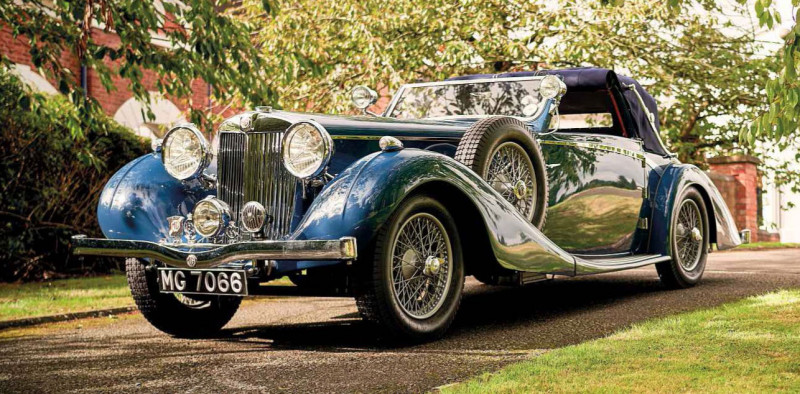
The first fruit of this new policy was the 2 Litre — today generally referred to as the SA — launched as a handsome four-door saloon at the 1935 Earls Court Motor Show with an extremely attractive list price of £375. The bodywork was penned by James Wignail of Mulliner and very much aped the Bentleys of the day. Underneath, cost savings meant taking components from other parts of the Morris group, so the SA was based on a Wolseley chassis and powered by a well-proven 2.0-litre pushrod straight-six, also of Wolseley origin though fitted with bespoke camshaft and carburettors for its MG application.
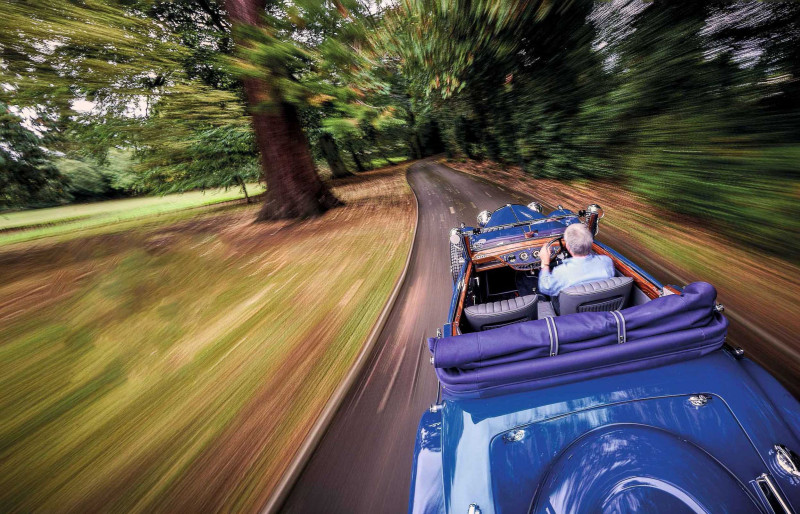
Predictably, MG traditionalists were aghast when the 2 Litre was announced: at 16ft long, it was no sports car, it had pushrods instead of overhead cams, synchromesh rather than a crash gearbox, and hydraulic rather than cable-operated brakes, for heavens sake.
Contemporary road testers, however, reported that it was lighter, more nimble and more pleasant to drive than traditional touring cars, and gradually even the sceptics were won over. Open versions followed, and the SA sold in very decent numbers — 2738 across all variants, more than the contemporary Midget — helping to keep the lights on at Abingdon.
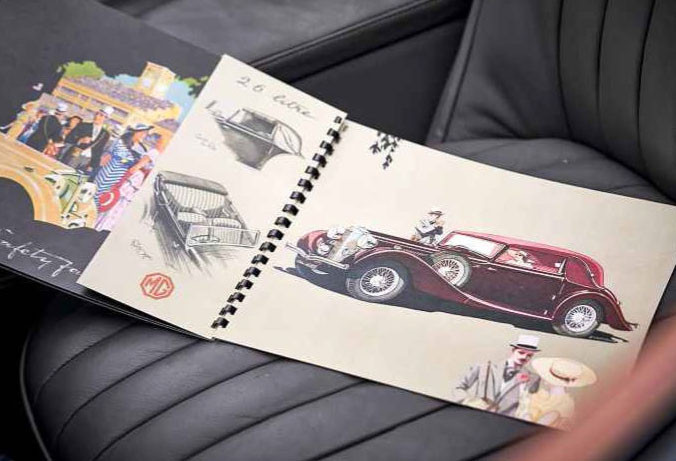
But there was even better to come. In 1938 appeared the WA — slightly bigger, even better-appointed, and with a unique-to-MG 2.6-litre straight-six that featured a fully counter-balanced crankshaft and produced a smooth 95bhp. Other enhancements included uprated brakes (drum size up from 12 to 14 inches, and with a dual-circuit Lockheed master cylinder) to cope with the extra performance, while the rear track was widened by more than three inches to enhance the ride and provide increased rear seat space. It would be the largest and most luxurious car ever produced at Abingdon.
The WA (or 2.6 Litre, as it was marketed at the time) was announced at the October 1938 Earls Court show and went into production two months later, but it would be shortlived. By September 1939 Britain was at war with Germany, and soon afterwards production stopped as the Abingdon factory was turned over to making tanks and aircraft parts. When car-making resumed after the war, the focus was on the TC sports car, lucrative exports of which to America meant MG was allocated precious steel.

There would be no more WAs. Only 369 were built, the vast majority being saloons, and fewer than 50 in total are thought to survive today. MG also offered a drophead coupe — or ‘folding head foursome’ as it was described in the brochure, 86 of which were built by Salmons & Sons in Newport Pagnell — plus a Charlesworth-bodied Tourer (only nine made).
But customers also had another option, which was to buy a rolling chassis and have it dressed by a coachbuilder of their choice. And for Continental European customers, the most exotic and glamorous of these creations was the fabulous three-position drophead created by Swiss coachbuilder Reinbolt & Christe.
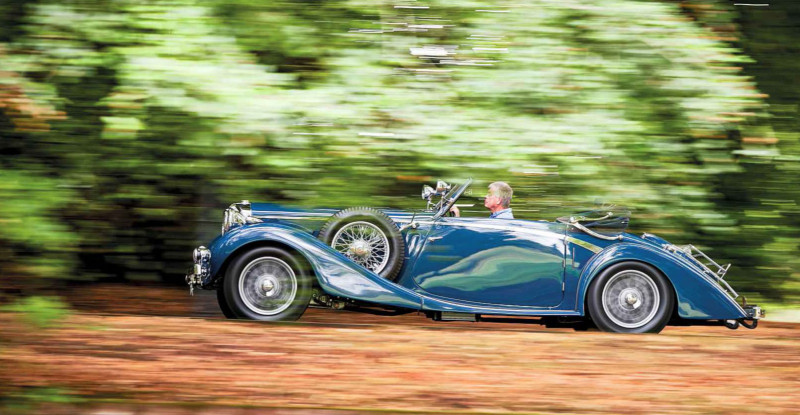
Based in Basel, Reinbolt & Christe had a long history — its earliest examples of coachbuilding were driven by horsepower of the four-legged kind — and by the mid-1930s the company was right at the top of its game, its designs clothing chassis from the likes of Mercedes, Delage and Delahaye. For the WA it designed a sleek drophead that could be fully closed, partially open in classic coupe de ville’ style, or fully open. Just two were built — and both were lost during the Second World War.
All of which means that the only way to experience the ultimate pre-war MG is to drive an exact replica that has been built around a genuine WA engine, drivetrain and chassis. And that is precisely what you see here.
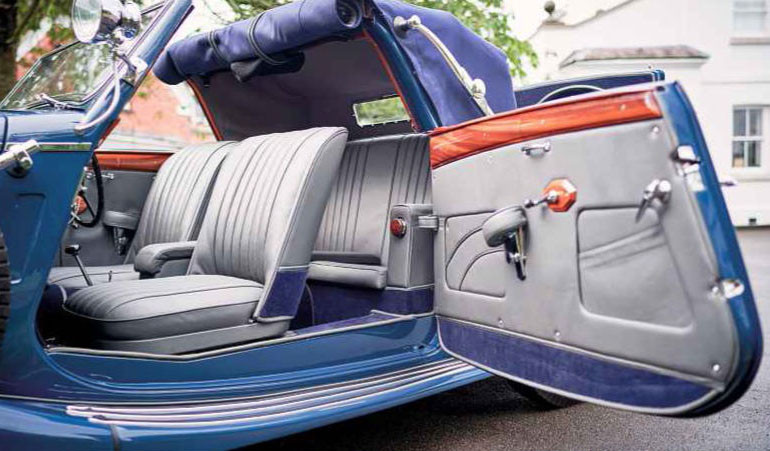
Tom Westley has had a lifelong affection for MGs. He learned to drive in a TF, which he still has and which shares garage space with a gorgeous MGA roadster that’s fitted with a particularly potent Oselli engine. It was on a visit to prewar MG specialist SVW Spares Ltd to look at a potential SA purchase that Tom spotted the bare bones of what had once been a WA saloon — engine, chassis, rear axle and various other parts, including the wings and radiator shell but minus the body itself — piled up in a corner.
'The 2.6 was the largest and most luxurious car ever produced at Abingdon’
‘SVW boss Peter Ratcliffe had been planning a restoration himself,’ says Tom, ‘but he agreed that if he could do the work, he’d sell me the project. I was aware of the Reinbolt & Christe cars, and I decided to make a recreation. It would be so much sexier than the saloon and, with the larger engine, perfect for long tours.
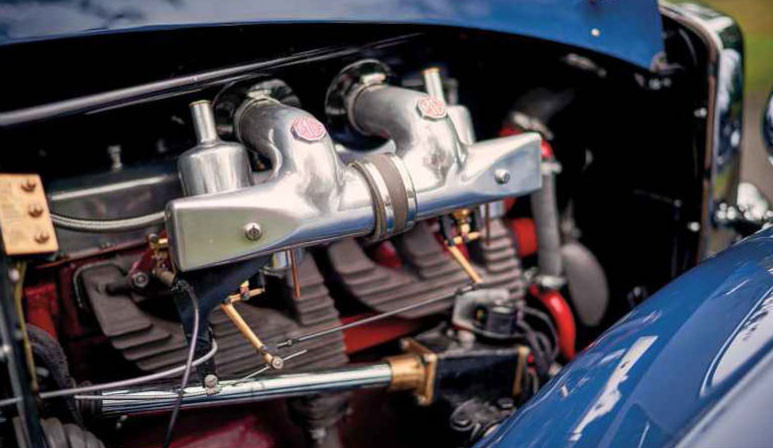
‘We gathered together all the data and photographs we could find. I knew there was one other SVW recreation, built in 1996 for Swiss collector Philippe Douchet and kept in a museum in Basel. Another MG collector, Maurice Standish, had built a similar convertible on a WA chassis rescued from Malawi. But the only surviving original Reinbolt & Christe body is on a 1937 MG SA, which is with a collector in Oregon USA, and he very kindly agreed to let us copy it and scale it up — the WA is not massively bigger, but it’s about four inches wider in the rear track, mostly to make the interior more luxurious.’
‘I decoded to make a recreation. It would be so much sexier than the saloon and perfect for long tours’ TOM WESTLEY
And then work began, around six years ago, restoring what they had, creating what they didn’t have from scratch. Rather handily, part-way through the project, SVW Spares was bought by enthusiast and collector John Harris, renamed SVW Ltd and relocated from Hull to Worcester, much closer to Tom’s home near Kidderminster, which meant he could be more closely involved.
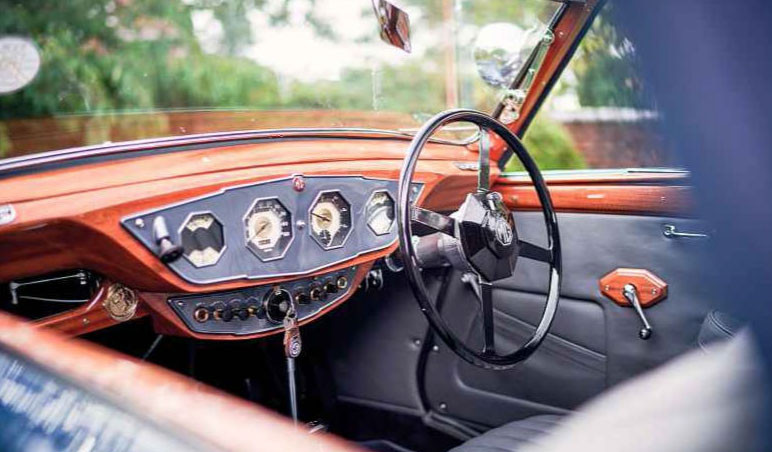
The body was recreated in aluminium over an ash frame by another local company, Pristine Panel Work. ‘A very talented young man, Lee Irish, who is ex-Morgan, did a lot of the work,’ says Tom. Fresh metal included the fuel tank, fabricated in aluminium for lightness but incorporating extra capacity with touring in mind. Next task was to create the chromed parts — hood irons, side flashings, the bracketry to hold the lights. Clearly nothing was available off the shelf.
‘Luckily for me I’m in the foundry business,’ says Tom, so Lee made the patterns and I made the castings in brass, then we got our friends at Concours Plating in Birmingham’s Jewellery Quarter to chrome them.’ So a Swiss masterpiece was recreated in the heart of England.
The trimming was also carried out locally, faithfully following the WA’s particular pleating style. One of the final decisions was the body colour. I like blue because it sets the chrome off’ says Tom, ‘and we went for Saxe Blue, which was a 1930s MG colour. I wanted the car to look exactly as it would have in period. Between us, I think we did a fantastic job. I’m really chuffed with the results.’
The WA was finished just in time for Tom’s 70th birthday last year. The biggest headache of all, because the original WAsaloon had spent time abroad and the original paperwork had long been lost, was getting the car accepted by the DVLA, requiring reams of paperwork to be completed and evidence of the car’s provenance provided, but eventually an age-related plate was issued. In fact, Tom managed to track down a registration that was just a few digits removed from the one the original donor saloon had worn.
He also discovered that, back in the day, the saloon had worn the registration MG 6464 and was the personal car of Cecil Kimber, the driving force behind MG. For an MG aficionado, that was the icing on the cake.
No wonder Tom’s beaming as he proudly shows us around his rebodied WA. It really is a magnificent creation. You just have to see past the slight disconnect between the familiar MG grille and the fabulously long, flowing bodywork behind it. In profile particularly, and also from the rear three-quarter, it’s every inch the European sophisticate, with hints of French and German cars of the period, even Mercedes’ much-vaunted cabriolets of the ’30s.
The details are every bit as appealing, starting with the imposing Lucas P80 headlights, the period-correct centrally mounted passing light (used instead of dipped beam when confronted with oncoming traffic) and the two high-mounted Carl Zeiss auxiliary lamps. These, Tom tells me, served a dual purpose: on the grand tour, you could twist them by hand to read roadside signposts, while their backs doubled as rear-view mirrors.
There are hints of Art Deco in the shape of the sidelamps and scattered around the beautifully trimmed interior with its array of gorgeous, octagonal Jaeger dials spread across the dashboard. The engine bay, too, is a thing of beauty, especially the polished inlet manifold, though why the Morris group insisted on putting the carburettors and fuel pipes just above the exhaust manifold is one of life’s enduring mysteries.
The WA is otherwise packed with thoughtful features. Lubrication of various mechanisms around the car can all be done via feeds sited in the engine bay; no need to go crawling underneath. But if you do need to raise the car, there’s a built-in ‘Jackal!’ hydraulic jacking system that allows you to lift the front, rear, or both ends simultaneously via a pump located under the front passenger footwell. Hopefully we won’t be needing that today.
Time to drive. The key is in the centre of the dash, with a pull starter alongside. The straight-six is already warm so it starts instantly and chunters away to itself contentedly. The plumply upholstered front seats are extremely comfortable, and there’s a fine view down the long bonnet to the radiator cap, with those big Lucas headlamps either side and the sidelights marking the crests of the wings — no doubt handy for placing this substantial car on the road. The windscreen can be pivoted outwards to allow air in, useful in hotter climes than the West Midlands.
It’s a very decent driving position, the steering wheel fairly tight into your lap but with plenty of room for your legs and ample space around the pedals. In fact it’s something of a boon having the wheel so close, because you really have to haul on it at manoeuvring speeds. I can’t recall many heavier set-ups. As Tom says, it beats going to the gym.
The gearbox is a conventional H-pattern four-speeder with an attractive exposed gate and a neat little flip-down catch to prevent you selecting reverse by mistake. There’s synchromesh on all but first gear, although, with ample torque, first is only really used to get you moving. The rev- counter reads to 6000rpm but we’re limited to 3500 or so while the engine is still running-in. Not that you’d mind; it’s hardly the sort of car in which you’d go chasing the redline.
The big MG gathers speed steadily rather than urgently. The gearshift itself is quite heavy but there’s a definition and a pleasingly engineered feel to it that make it a delight to use. The steering box, in contrast, has quite a bit of free play and the car tends to wander a little, following the topography of the tarmac, which is a touch disconcerting until you’re used to it, but that’s not untypical of this age and type of car.
The brakes, though, are fine, with a reassuring response to the pedal. The ride’s pretty good, too, absorbing the smaller lumps and bumps and only being momentarily wrong- footed by sunken ironworks and the like. Basically, it feels what it is — a big, heavy car, very much of its period, with few sporting pretensions but big on charm, a car for the grand tour and, of course, dripping in period style.
Owner Tom has already completed one tour — 600 miles through Lincolnshire during one of last summer’s heatwaves — which provided a thorough shakedown for the engine and drivetrain. T was really pleased with how it went,’ he says. ‘Its natural speed seems to be around 55-60mph, but my winter project is fitting a higher-ratio rear axle, which should take the natural cruising speed to 65-70mph. It was doing around 24-25mpg, which is not bad at all. The higher ratio should help there, too.’
He’s now making plans for the summer. Perhaps a trip to Switzerland, home of Reinbolt & Christe? ‘It’s a long way’, he laughs, ‘but that would be lovely, wouldn’t it?’
THANKS TO SVW Register of the MG Car Club, svwregister.co.uk.
TECHNICAL DATA 1939 MG WA 2.6 Litre Drophead recreation
- Engine 2561cc OHV straight-six, twin semi-downdraught SU carburettors
- Max Power 95.5bhp @ 4400rpm
- Max Torque 129lb ft @ 3100rpm
- Transmission Four-speed manual, rear-wheel drive
- Steering Worm and roller
- Suspension Front and rear: beam axles (live rear), semi-elliptic leaf springs, lever-arm dampers brakes Hydraulic drums
- Weight 1232kg
- Top speed c90mph
Clockwise, from bottom left Elegant interior features trad octagonal dials; overhead-valve straight-six engine; beautifully trimmed interior and hood are more luxurious than most MG fare; overall length best appreciated in profile.
Above left Elegant European touring car coachwork should seem incongruous, flowing from an MG grille. In this case, it's a recreation built on 2.6 Litre underpinnings.
Top left, and above British-built Salmons ‘folding head foursome’ featured in brochure; the 2.6 drophead is in its element on the open road.


